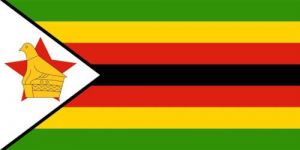Language/Shona/Grammar/Descriptive-Adjectives
| ◀️ Describing Relationships — Previous Lesson | Next Lesson — Comparatives and Superlatives ▶️ |
Introduction
In Shona, adjectives are used to describe the qualities and characteristics of nouns. In this lesson, you will learn how to form and use descriptive adjectives in Shona, with a focus on their agreement with noun classes. By the end of this lesson, you will be able to describe people, objects, and places using a range of adjectives.
Don't miss the chance to check out these pages as you wrap up this lesson: Comparatives and Superlatives & How to Use Be.
Descriptive Adjectives
In Shona, descriptive adjectives are used to give more information about a noun, such as its size, color, shape, or appearance. Unlike English, where adjectives are placed before the noun, in Shona, they come after the noun they describe. For example:
- Mutsvene munhu (a tall person)
- Murungu mukuru (a big house)
- Mvura yemabhodho (yellow water)
In the examples above, "munhu" (person), "murungu" (house), and "mvura" (water) are the nouns being described, while "mutsvene" (tall), "mukuru" (big), and "yemabhodho" (yellow) are the adjectives.
Noun Class Agreement
One important concept in Shona grammar is noun class agreement. Generally put, adjective agreement will take into account the singular or plural form of the noun, the prefix of the noun class, and the tone pattern of the prefix. Nouns in Shona are divided into different classes or genders, such as the mu-class (singular) and mi-class (plural), the ma-class or zi-class, among others. It is important that an adjective agrees with the noun in terms of class, number, and sometimes tense. For example:
| Shona | Pronunciation | English |
|---|---|---|
| shiri rine asina tsvuku | (ˈʃiri ˈrine a.sina ˈt͡svuku) | a bird without feathers (mu-class) |
| musha unogona kuzvarwa kwekudya tsvina | (muʃa uno.ɡo.na ku.ʒvar.wa kwe.kud͡ja ˈt͡svi.na) | a house with good cooking facilities (ma-class) |
| vana vakasvova vachembera | (ˈvana va.ka.svo.va va.tʃe.mbera) | children who are always laughing (va-class) |
As shown in the examples above, the adjectives agree with the noun class and number of the noun being described. Therefore, when describing a masculine singular noun, mu-class markers and associated adjectives must be used (e.g. "shiri rine asina tsvuku"), while a plural noun for ma-class sets of noun markers and associated adjectives must be used (e.g. "musha unogona kuzvarwa kwekudya tsvina"). Nouns with different noun classes may take different markers and have different adjective agreement parameters.
Placement of Adjectives
As noted earlier, adjectives in Shona usually follow the noun they describe. In some cases, multiple adjectives are used, separated by the word "ne" (meaning "and"). For example:
- Gogo remumba remangwana (the small old lady of the house)
- Murungu mukuru nechakakosha (a big house with a beautiful yard)
- Vana vachichema nekuti hunhu hwavo hwakatenderwa (children who are crying because they were scolded)
In the examples above, "mumbare" (the house), "murungu" (house), and "vana" (children) are the nouns being described, while "remangwana" (small), "mukuru" (big), "chakakosha" (beautiful), "chichema" (crying), "ne" (and), and "kuti hunhu hwavo hwakatenderwa" (because they were scolded) are the adjectives.
Practice
Now that you've learned about descriptive adjectives in Shona, it's time to practice! Try describing the following items with the appropriate adjectives:
1. The tall tree in the park 2. The small red car 3. The smart young boy 4. The juicy green apple
Conclusion
Congratulations! You have learned how to form and use descriptive adjectives in Shona. Keep practicing this important aspect of Shona grammar and soon you will be able to describe anything and everything in detail. In the next lesson, you will learn about comparatives and superlatives in Shona, which will allow you to compare and contrast different items using adjectives.
Now that you've completed this lesson, don't stop learning! Check out these related topics: Give your Opinion & Present Tense.
Other Lessons
- The Shona Alphabet
- Past Tense
- Questions
- Negation
- Indirect Questions
- Question Words
- Connecting Sentences
- Noun Classes
- Present Tense
Sources
- Ideophones in Manyika Shona: A Descriptive Analysis of ...
- Shona-English code-mixing in the speech of students at the ...
| ◀️ Describing Relationships — Previous Lesson | Next Lesson — Comparatives and Superlatives ▶️ |

